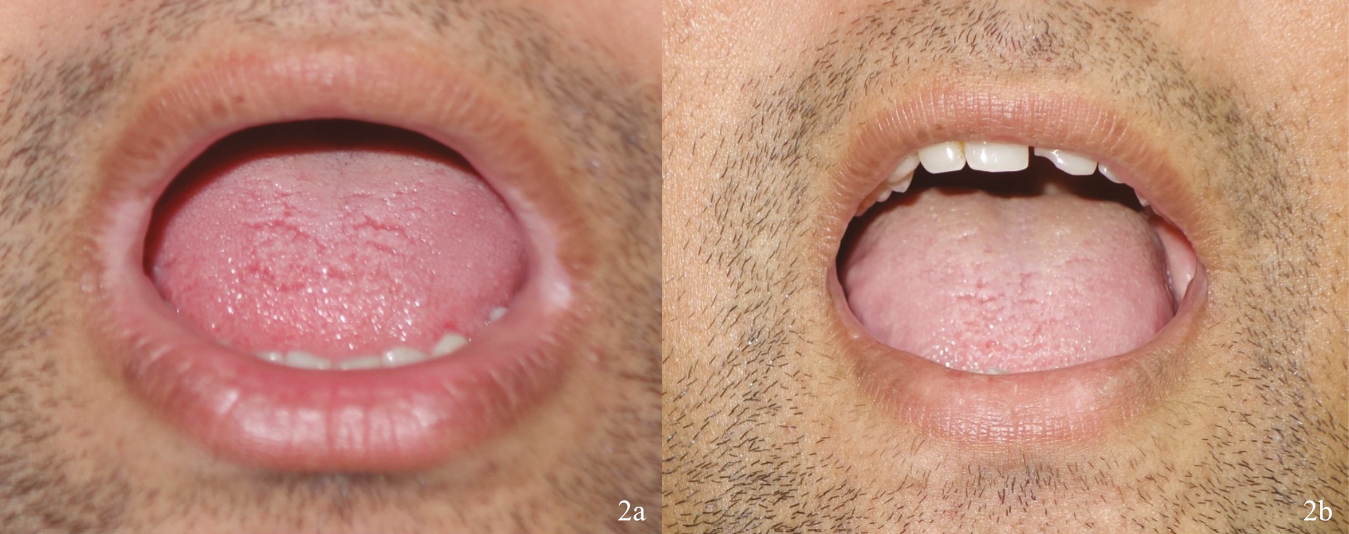Translate this page into:
Mini Punch Grafting Involving Angle of Lip Using Cynoacrylate Glue
Address for correspondence: Dr. Yogesh M. Bhingradia, Shivani Skin Care and Cosmetic Clinic, Surat, India. E-mail: yogeshbhingradia@gmail.com
This article was originally published by Wolters Kluwer - Medknow and was migrated to Scientific Scholar after the change of Publisher.
Sir,
Vitiligo involving angle of mouth is cosmetically embarrassing and socially stigmatizing, especially in pigmented races as it can be easily noticed by others.[1] Currently, suction blister grafting is considered as gold standard for treating vitiligo involving the angle of mouth but time taken for the formation of blisters is a major drawback. Further angle of mouth is considered a difficult site for holding the graft due to its mobility. The purpose of the study was to find the effectiveness of autologous miniature punch grafting technique and the role of cyanoacrylate (CA) glue for providing quick and effective immobilization of donor grafts in stable vitiligo involving the angle of mouth.
Twelve patients with stable vitiligo over angle of lips were included in our study. Post auricular region was selected as donor area. After thoroughly cleaning the area, superficial dermal grafts of 1.5 mm were harvested in Petri dish containing normal saline. The harvested graft was carefully placed (dermal side down) in the crater (1.5 mm) created in the recipient area. Firm pressure was applied with moist gauze piece to achieve hemostasis. CA glue was applied all over grafted area. No dressing or immobilization was required in any patient. All patients were advised to take normal regular diet. Topical antibiotic was not used. Systemic antibiotic and anti-inflammatory drugs were used for 7 days. CA glue was peeled off by itself after 7–10 days.
Of the 12 patients, 10 showed excellent (complete) repigmentation (≥90%) at the end of 3 months. Only one patient had marked repigmentation (76–90%) at the end of 6 months [Figure 1A,B] and [Figure 2A,B]. One patient lost to follow-up at 4 months with marked repigmentation (76–90%). Cobblestoning was reported in two patients. None of our patients reported color mismatch, graft rejection, graft dislodgment, static graft, and depigmentary junctional lines.

- (A) Vitiligo at angle of lip and (B) post 6 months resolution

- (A) Vitiligo at angle of lip and (B) post 6 months resolution
Vitiligo of angle of mouth is generally resistant to medical treatment because of the absence of hair follicles, the melanocyte reservoirs.[2] This site is also different from other body sites in being highly mobile and absence of any underlying firm structure to fix the grafted skin, making hold of graft more difficult. Most authors prefer three-layered dressing. Problems with three-layered dressing are restriction of normal daily activities such as brushing of teeth, which leads to improper oral hygiene and foul smelling, dietary restriction, speech and cosmetic restriction. All these problems can be easily solved by using as CA glue as a chemical dressing.
Advantages of this technique are as follows:
CA glue is easy to apply, but not easily removable, and peels off by itself within 7–10 days.
Post-operative tremendous three-layered dressing and frequent follow-up are not required.
It gives adequate pressure to prevent graft dislodgment.
CA glue is a low-cost, fluid-proof, antimicrobial barrier.
No strict immobilization is required, and patients can perform daily routine activities.
The patient can resume talking and intake of normal diet from the day of the procedure.
So, to conclude, CA is simple, fastest, easiest, least expensive, and effective with excellent cosmetic acceptance. CA glue was helpful for eliminating the need of immobilization, dressing, diet restriction, and frequent follow-up.
Declaration of patient consent
The authors certify that they have obtained all appropriate patient consent forms. In the form, the patient(s) has/have given his/her/their consent for his/her/their images and other clinical information to be reported in the journal. The patients understand that their names and initials will not be published and due efforts will be made to conceal their identity, but anonymity cannot be guaranteed.
Financial support and sponsorship
Nil.
Conflicts of interest
There are no conflicts of interest.
REFERENCES
- Melanocyte transfer via epidermal grafts for vitiligo of labial mucosa. Dermatol Surg. 2004;30:45-8.
- [Google Scholar]
- Suction blister epidermal grafting for vitiligo involving angles of lip: Experience of 112 patients. J Cutan Aesthet Surg. 2018;11:13-9.
- [Google Scholar]





